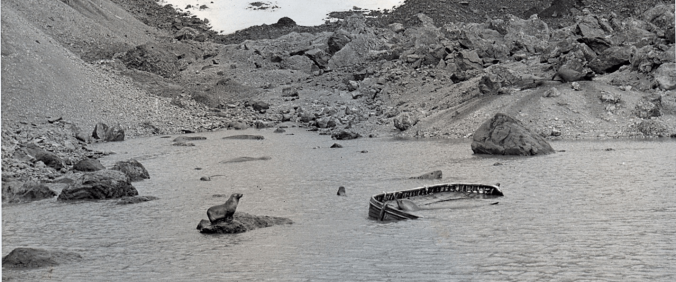
Kersey in 1957. Although Jack Merriott’s watercolor presents an idealized image of the village – it was commissioned for use in a railway advertising campaign – it does give an idea of just how ‘old’ Kersey must have looked to strangers in the year it became central to a ‘timeslip’ case.
Looking back, the really strange thing was the silence. The way the church bells stopped ringing as the little group of naval cadets neared the village. The way even the ducks stood quiet and motionless by the shallow stream that ran across the road where the main street began.
And, when the boys thought about it afterward, they recalled that even the autumn birdsong faded as they neared the first houses. The wind had dropped to nothing, too.
Not a leaf stirred on the trees they passed. And the trees appeared to cast no shadows.
The street itself was quite deserted—not so odd, perhaps, for a Sunday morning in 1957, especially in the rural heart of England. But even the remotest British hamlets displayed some signs of modernity by then—cars parked by the roadside, phone wires strung along the roads, aerials on roofs—and there was nothing of that sort in this village. In fact, the houses on the high street all looked ancient; they were ragged, hand-built, timber-framed: “almost medieval in appearance,” one boy thought.
The three, all Royal Navy cadets, walked up to the nearest building and pressed their faces to its grimy windows. They could see that it was some sort of butcher’s shop, but what they glimpsed in the interior was even more unsettling. As one of them recalled for the author Andrew MacKenzie:
There were no tables or counters, just two or three whole oxen carcasses which had been skinned and in places were quite green with age. There was a green-painted door and windows with smallish glass panes, one at the front and one at the side, rather dirty-looking. I remember that as we three looked through that window in disbelief at the green and mouldy green carcasses… the general feeling certainly was one of disbelief and unreality… Who would believe that in 1957 that the health authorities would allow such conditions?
They peered into another house. More
![]()








